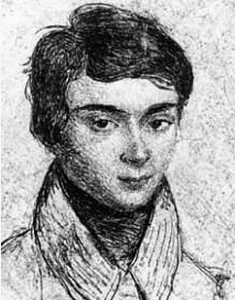The 10 Misfortunes of Evariste Galois
If you think you’re unfortunate, you should read the biography of Evariste Galois, a mathematical genius who was one of the founders of group theory. He lived during a political turmoil in France, and his life was filled with bad luck and disappointments.
Below are the 10 most notable misfortunes of Galois’ life.
- In 1828, at age 17, he failed the entrance examination at Ecole Polytechnique, the most prestigious school of mathematics in France at that time. He failed to explain his answers in the oral examination because he solved the problems mentally.
- In May 1829, he submitted two research papers to Augustine Cauchy, but Cauchy refused to publish them. Some accounts claim that Cauchy lost the papers, while other sources say that Cauchy made suggestions for revisions.
- In July 1829, his father committed suicide after a political dispute with their village’s priest.
- In August 1829, he failed the entrance exam in Ecole Polytechnique the second time after throwing blackboard eraser at his examiner. Legend holds that he was exasperated because his examiner could not understand his explanations. Of course, he was more than qualified. After failing the exam, he entered Ecole Normal.
- In February 1830, he submitted a research paper to Joseph Fourier, but Fourier died before he could review it. The paper was never found in Fourier’s things.
- In December 1830, he wrote a letter to Gazette de Ecoles criticizing the director and students of his college because of their political apathy. He was expelled.
- After his expulsion, he attempted to start a private school and taught higher algebra. He had 40 students, but the number fell after the first meeting. The class was eventually discontinued.
- In July 1831, while in the artillery, he submitted a paper Simeon-Denis Poisson. Poisson later described his work as “incomprehensible,” but encouraged him to revise it.
- He was jailed for six months for illegally wearing a military uniform (a uniform he wore before their artillery group was disbanded).
- In May 30, 1832, a month after his release from jail, he was challenged into a duel over a young woman. He was killed at age 20.
Galois died at a very young age and the impact of his work was only appreciated by the mathematics community 14 years after his death. He was too ahead of his time. Had he lived longer, he would have been one of the most prolific mathematicians of his time.
Sources: Mathematical Scandals, Wikipedia, MacTutor History
